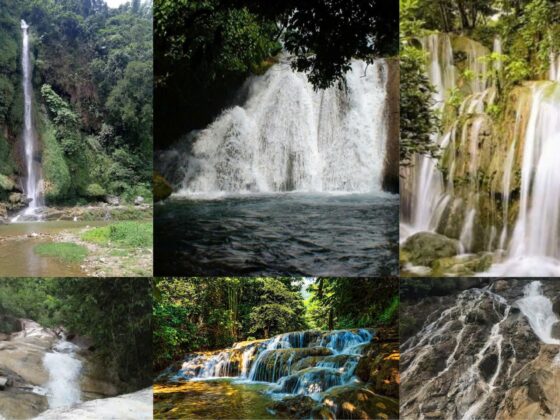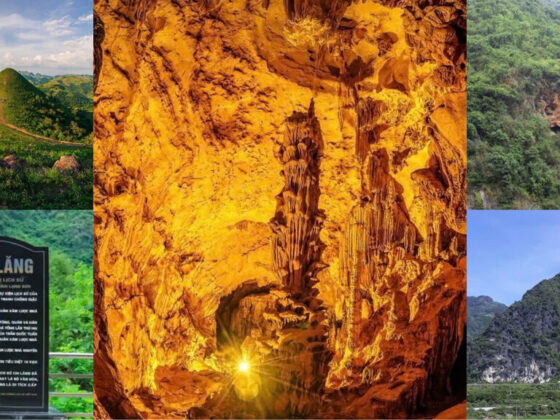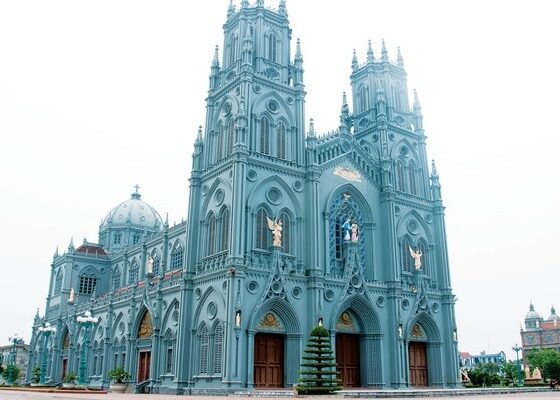Table of Contents Show
Recently, I happened to learn about a beautiful yet forgotten historical site in Da Lat — the Nguyen Huu Hao Mausoleum. I felt both regret and fascination for its timeless charm, so I decided to go explore it myself.
Read more interesting posts here:
- A “Forbidden” Hike: The Secret Allure of Pinhatt Peak in Da Lat
- Pilgrimage to the Top 4 Unique Temples in Sóc Trăng – One of Vietnam’s Most Sacred Spiritual Lands
- Exploring Timeless Wonders: A Journey Through Sa Huỳnh Cultural Heritage
Who was Duke Nguyen Huu Hao?

Duke Nguyen Huu Hao was the father of Queen Nam Phuong, the last queen of Vietnam’s monarchy. The Nguyen Huu Hao Mausoleum was commissioned by the Queen herself as a resting place for her parents. Construction began in 1939 and took two years to complete. Even after more than 80 years, it still retains its magnificent architecture and serene aura. Once abandoned and overgrown with weeds, the tomb’s tiled roofs were covered in moss — a relic fading quietly through time.
Where is the Nguyen Huu Hao Mausoleum located in Da Lat?

In recent years, the Nguyen Huu Hao Mausoleum has gained more attention thanks to stunning photos shared online and has now become a check-in spot on the ExoTrails app. Just search for “Lang Quan Cong Nguyen Huu Hao,” and the app will guide you directly there. The route is easy to follow, and the site remains free to visit.
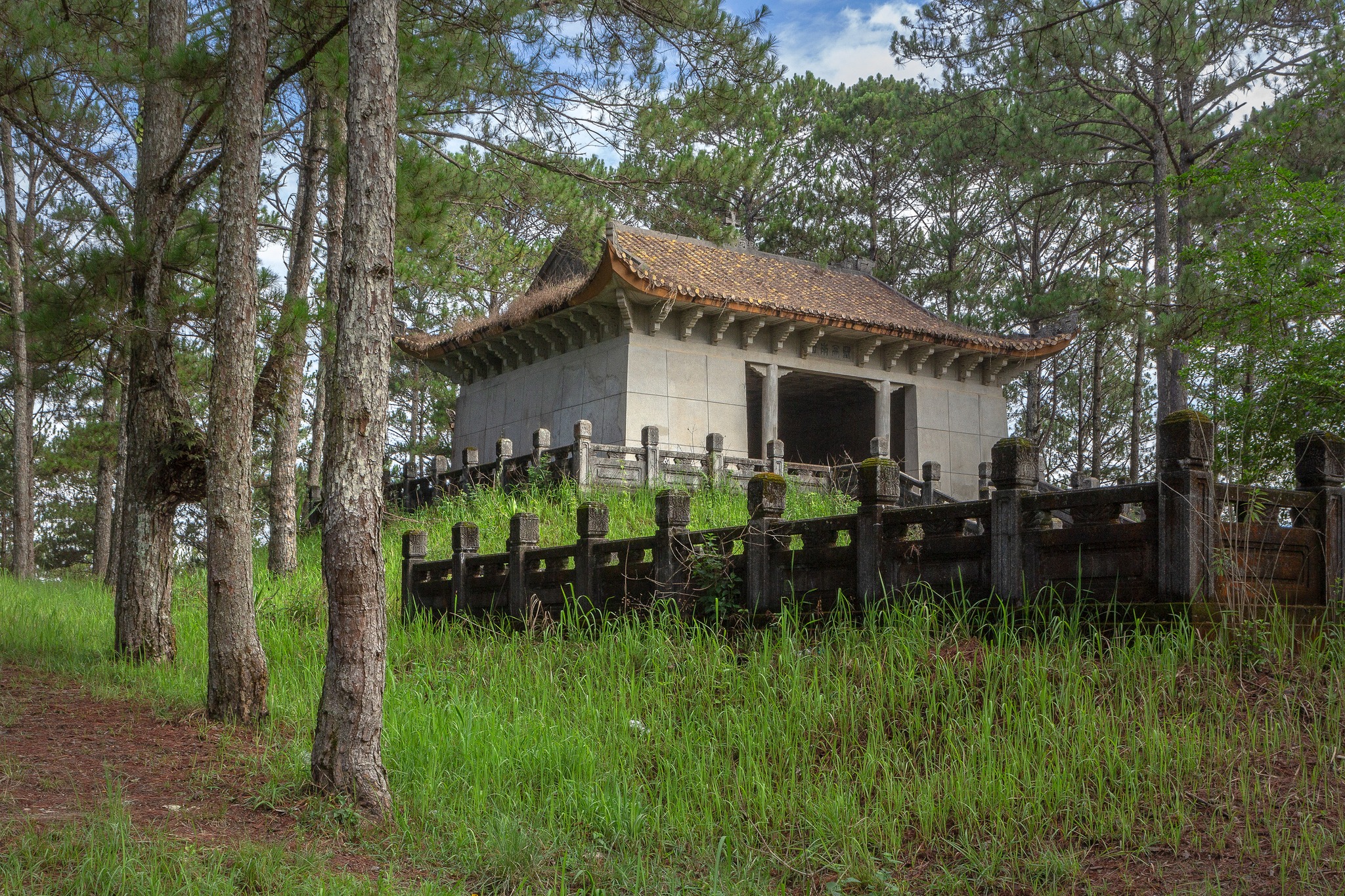
The mausoleum sits on a large hill at the intersection of Cam Ly and Van Thanh streets, surrounded by lush greenery. It was built on the hilltop to preserve its tranquility and harmony with the surrounding landscape — a site chosen for its excellent feng shui.
My Journey to Explore the Nguyen Huu Hao Mausoleum
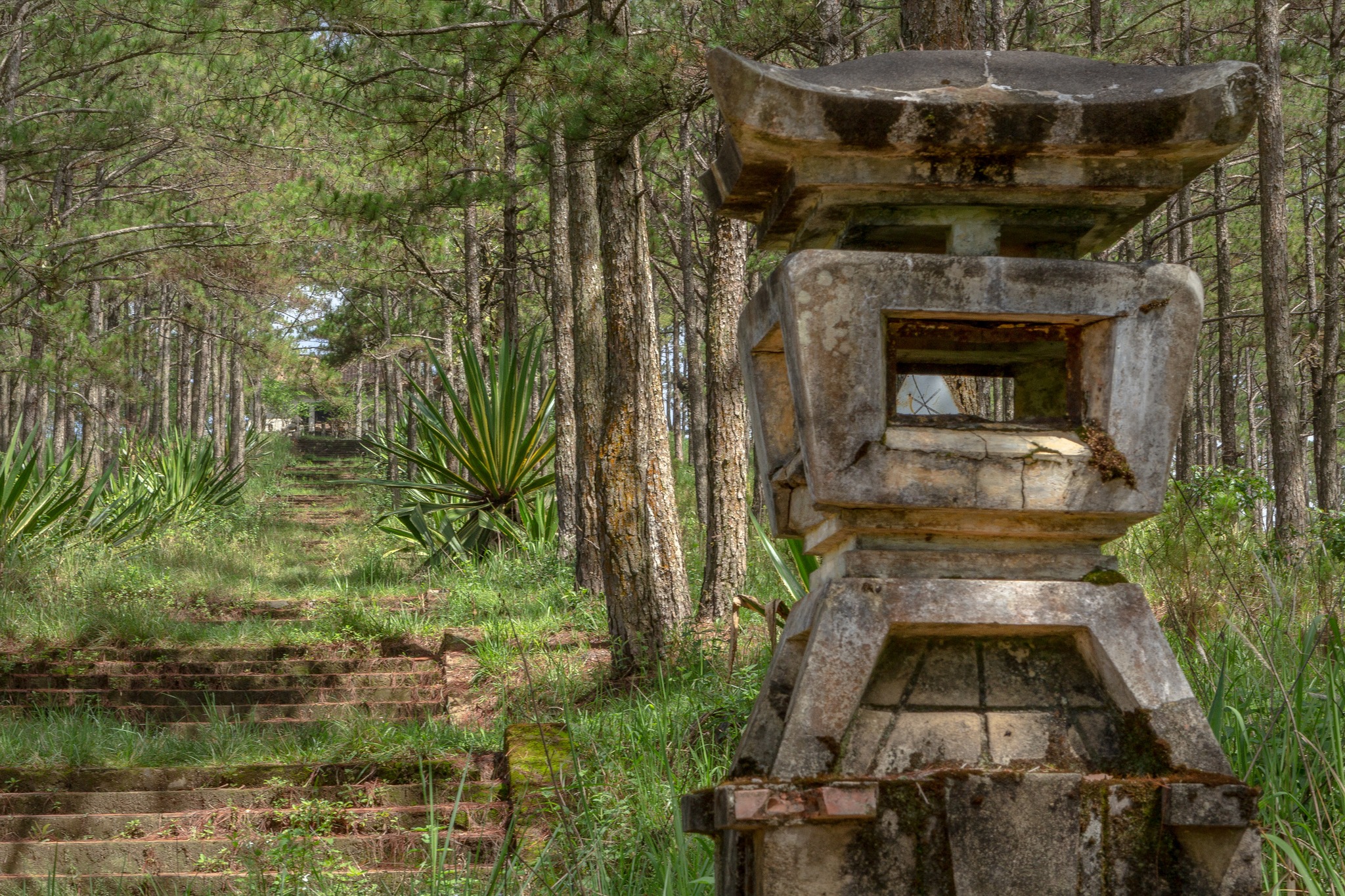
Because the mausoleum is located on top of a hill, visitors must climb a steep path to reach it. After a short walk, I came across the “Nhat Chinh Dao” — a stairway of 158 steps leading directly to the grand entrance. Though the climb was tiring, I couldn’t help but marvel at its beauty. On both sides of the stairway grow rows of century-old agave plants and tall pine trees standing proudly in line.

The best time to visit the Nguyen Huu Hao Mausoleum is between 2 p.m. and 4 p.m., when the sunlight slants gently through the trees, illuminating the staircase like something out of a fairy tale. Even if you just stand halfway up the stairs, you’ll find endless photo opportunities. It’s even more breathtaking during the wild sunflower season, when golden blossoms surround the path.
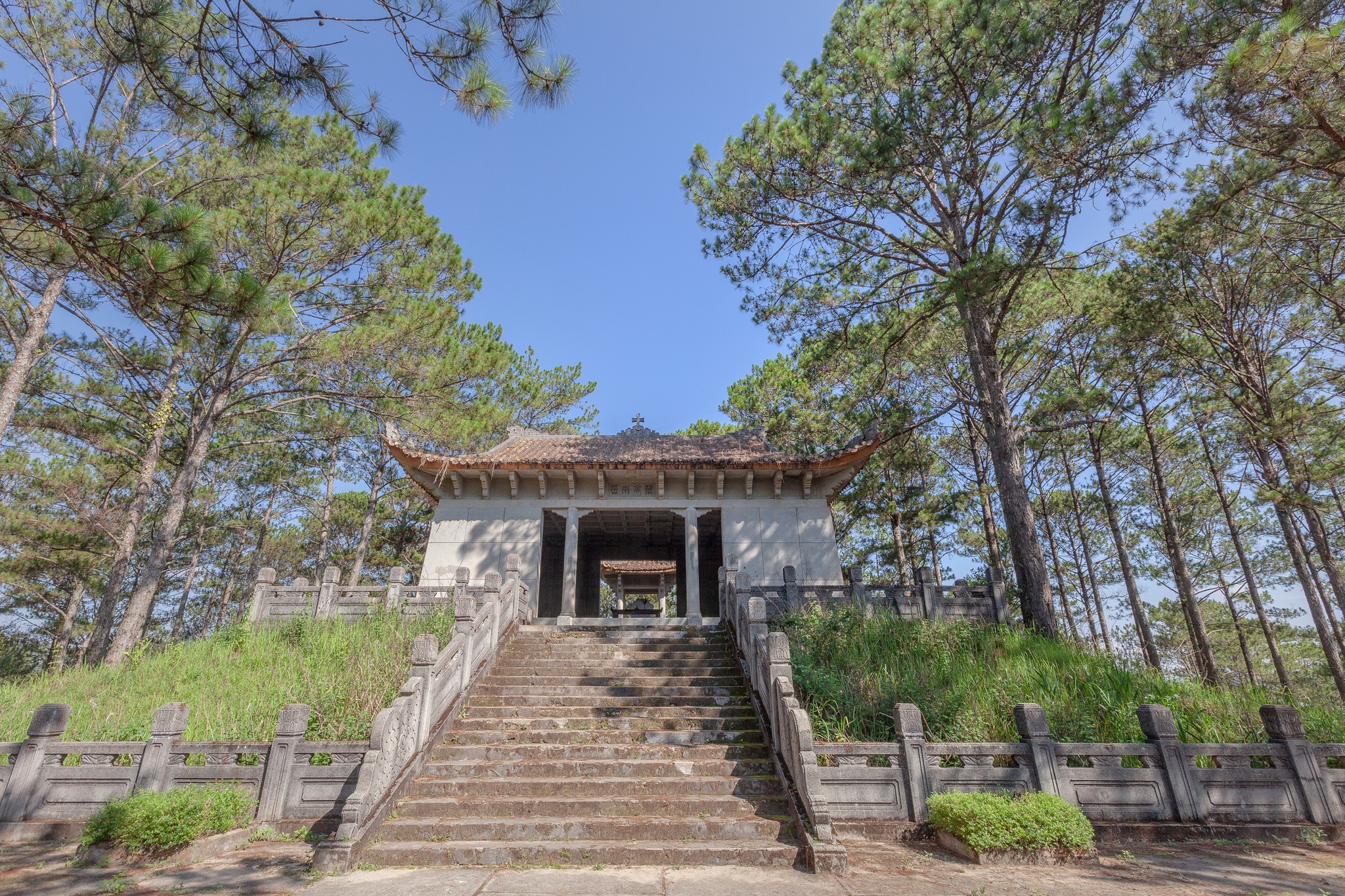
At the final steps stand two stone lions guarding the mausoleum — perhaps to ward off unwanted spirits. In the main courtyard lies a large stone stele with finely carved Chinese characters, while a moss-covered lotus relief decorates the stone corridor around the central shrine.

Ascending a few more steps brings you to the main gate of the Nguyen Huu Hao Mausoleum. The outer roof and structure reflect the imperial Hue-style architecture, while the interior remains simple — housing only the resting places of the Duke and his wife, an altar, and another small shrine behind them. Fresh offerings and incense are always present, giving the site a peaceful and sacred atmosphere.
Though partially restored, the mausoleum still preserves its original design and ancient charm. Moss creeps across old stones, adding to its nostalgic allure. Surrounded by pine trees and mountain air, the place feels suspended between worlds — calm, quiet, and steeped in history.
A Hidden Historical Gem Worth Visiting in Da Lat
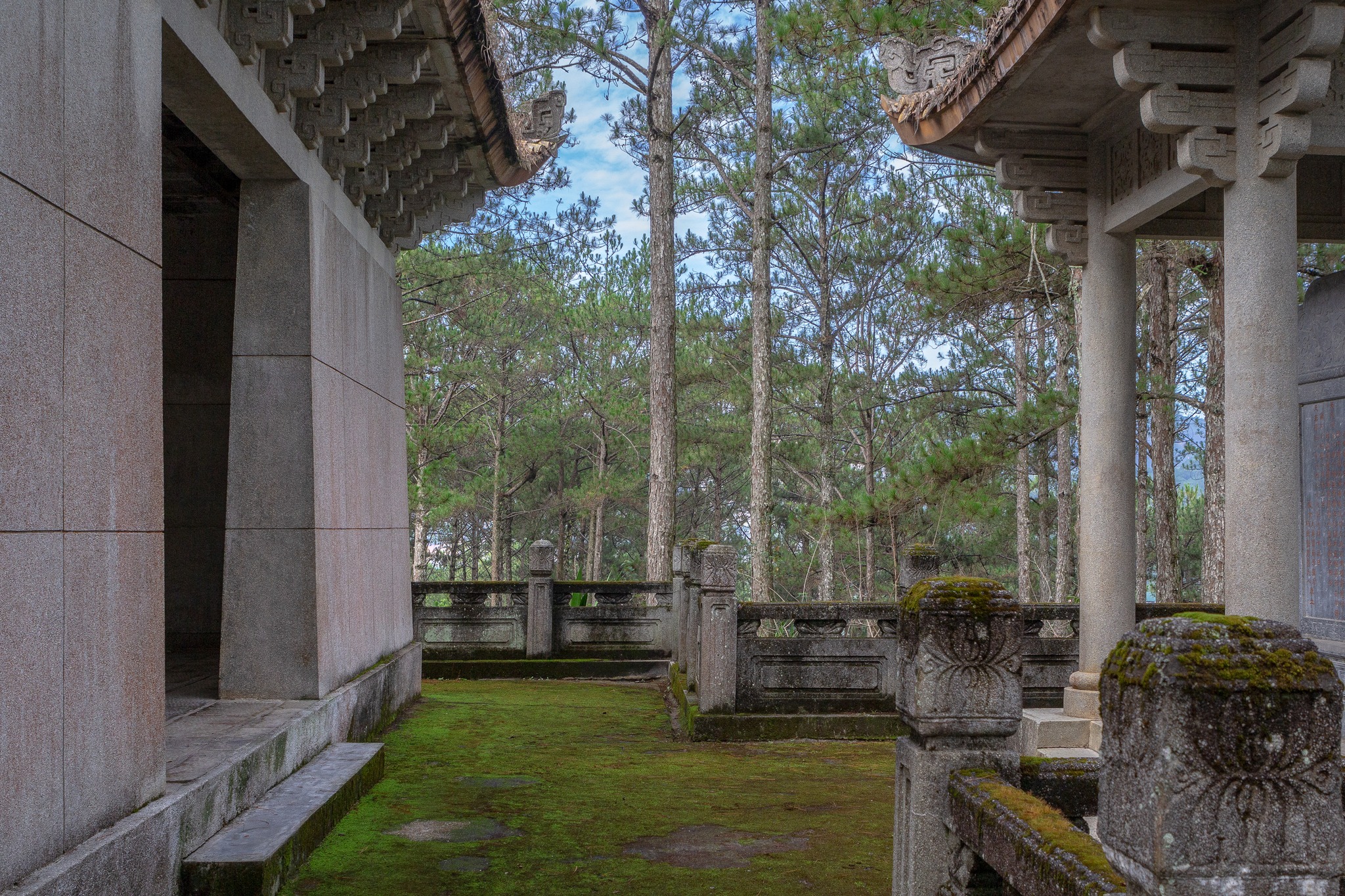
The Nguyen Huu Hao Mausoleum is enveloped in serenity. I loved sitting there for a long time, letting the silence sink in — listening to the whisper of the wind through pine needles, the rustle of leaves, and the chirping of birds echoing through the highlands.
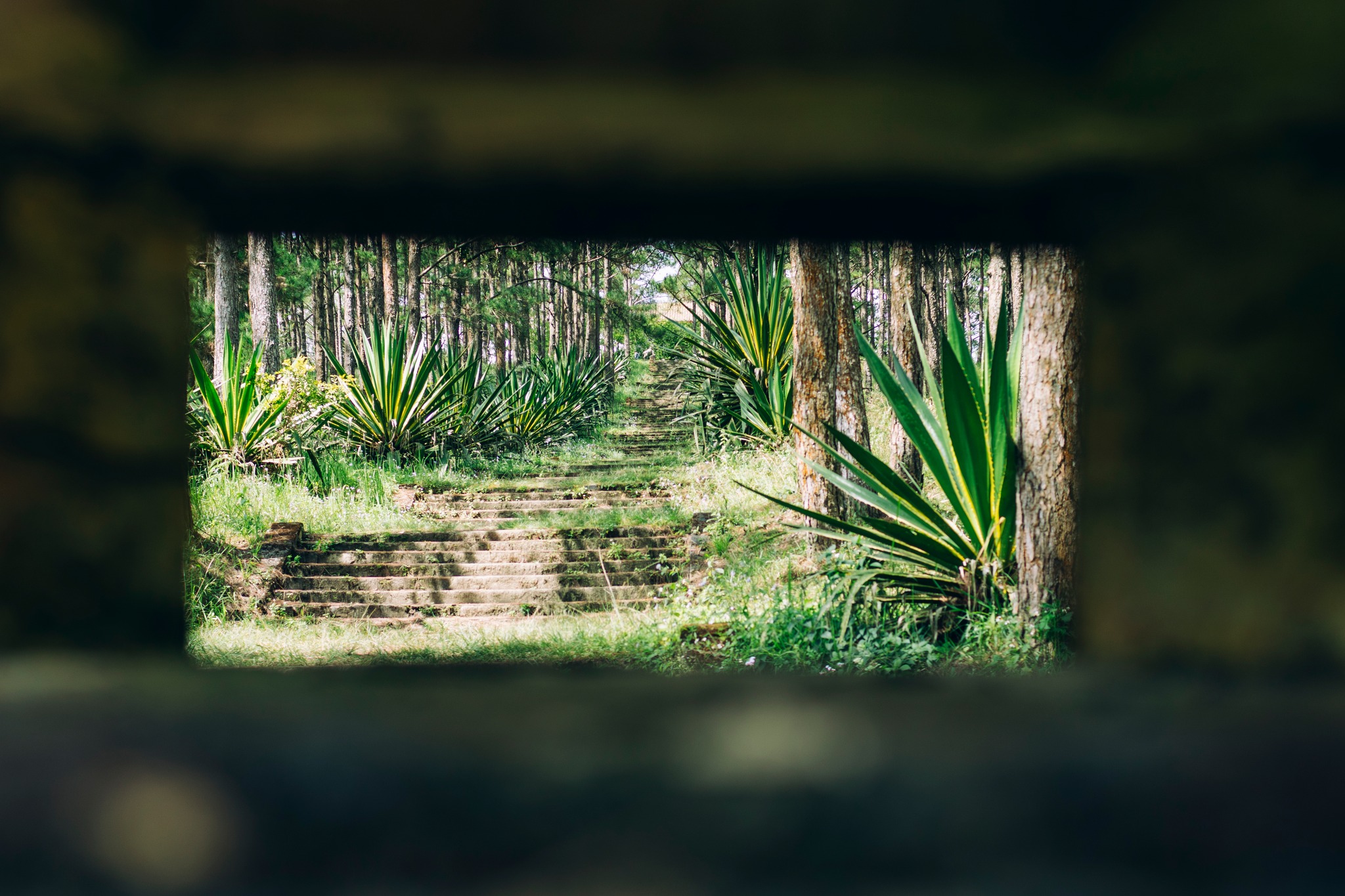
If you love history or simply crave a peaceful escape, this is a destination that will touch your soul. Wander around, take photos, and stay until sunset — a poetic ending to a day in the “City of Eternal Spring.”
Today, this beautiful site has begun to reappear in photos taken by young travelers wearing traditional outfits — a wonderful gesture of respect for its sacred atmosphere. I’m truly happy that the Nguyen Huu Hao Mausoleum is no longer forgotten.
A Few Notes Before You Visit

Since this is a resting place for the deceased, please dress respectfully and behave appropriately when visiting the Nguyen Huu Hao Mausoleum. There are no trash bins on-site, so please bring your waste back with you. The upkeep of this heritage site is entirely voluntary, done by local residents who care deeply for it — let’s not add to their burden.
- Important note: Some visitors have reported a man falsely claiming to be a security guard and charging an entrance fee. If you encounter him, please report this to the local authorities and do not pay to support such behavior.
About Nguyen Tuyet Nhung:
A girl who loves wandering from place to place, never quite losing the sun-kissed tone of her skin — that’s me!
I travel not to “chase check-ins,” but to immerse myself in every landscape and culture I encounter. Each destination I visit, I fall in love with — not only in its most beautiful season but also when it’s quiet and imperfect.
I believe in preserving the beauty of nature. I’m always happy to share wonderful places with others, but I also hope everyone joins me in protecting them — so future travelers can marvel at the same breathtaking sights we see today.
Photos by Nguyen Tuyet Nhung & Em Be Tay Nguyen
This article belongs to Nguyen Tuyet Nhung, a member of Chuyện của những cung đường (Stories of the Trails) — an outdoor community managed by ExoTrails, Vietnam’s leading navigation and mapping app.
Besides the Nguyen Huu Hao Mausoleum, ExoTrails features countless other cultural and spiritual destinations across Vietnam. Join our vibrant community on Facebook to share your trekking stories and tips, and don’t forget to like the ExoTrails fanpage for the latest updates and exclusive offers!










